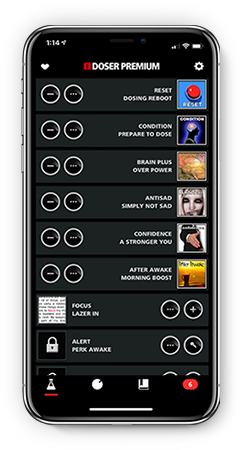
Hip hop producer Sajeel Kapoor (aka Sez on the Beat) used binaurals on the i-Doser app around four-five years ago. These effects do not come close to those of LSD.
#SLIC TOOLKIT FOR WINDOWS 10 KEYGEN#

For another track (1.4 million views), which claims to replicate an “acid trip" (with an all-caps warning in the title), most listeners reported feeling mild or no after-effects (beeping, buzzing and robot sounds) lasting a few minutes. The comments section is where listeners describe in detail their seemingly unique but shared experiences.įor a binaural beats track that’s supposed to induce a cannabis high of the “purple haze" strain (808,000 views), the most common effect reported was light-headedness, while some 500 listeners agreed with (username) Pearls Perfect, who says, “I accidentally paused it and felt empty inside." Other effects like laughter for no apparent reason, eye twitching, paranoia and limbs getting heavier were also widely reported. There’s distorted, multicoloured psychedelic artwork for thumbnails, and views ranging from 800,000 to 125 million for the first few on the list. Deep-diving into YouTube can offer a glimpse of this. Raghunathan calls digital drugs “just a marketing tactic", though personal accounts report mild to strong experiences. It would give me a pace to keep my breathing steady," says producer Amrith Raghunathan (aka Doc.Awes), who has worked for artists such as Kendrick Lamar, Madonna and Coldplay. The effect was nothing crazy, but I used them to meditate. I experimented with producing them I created two sine wave frequencies and separated them by 1 hertz. “I first learnt about binaural beats while studying sound engineering. These audios, too, are available online and can be considered calmer versions of digital drugs as they affect moods differently.Īlthough there is some science backing the calming effects of binaurals, there is no supporting evidence for digital drugs. “Binaural beats therapy", which is increasingly used as an adjuvant in treating stress and anxiety, and to aid sleep and meditation, is based on the same concept.

This is combined by the brain and it forms a new frequency called the binaural beat." It would be a bit of a stretch to call it music, he adds.

Delhi-based neurologist Manoj Khanal explains: “They are ambient sounds or pure tones transmitted through headphones, a slightly different frequency in each ear. These tracks-available on YouTube and leading producer I-Doser Labs’ website -claim to produce the same effects as drugs such as cannabis, cocaine, LSD, MDMA, and scores of others that alter states of mind.īut do they really work? What are they, and can they be harmful?ĭigital drugs are essentially audio files that generate binaural beats-an auditory illusion in the brain. Into the fray come “digital drugs".Īudio tracks marketed as “digital" or “audio drugs" have been on the internet for a while.

Many such substances-like the Colombian “devil’s breath" used for robbery or the deadlier-than-heroin “Krokodil" home-cooked in Russia using headache pills-are perplexing and unheard of, and they only keep getting more bizarre. The subject of psychoactive drugs sparks scientific curiosity about the human brain and the marvel that is the conscious mind. My classmates are baffled: You “tripped" on a digital drug? I am spooked out for the rest of the night, comparing the temperature of my feet obsessively.īy morning, curiosity has washed away the horror. Panic-stricken, I remove my headphones and put my phone away.


 0 kommentar(er)
0 kommentar(er)
